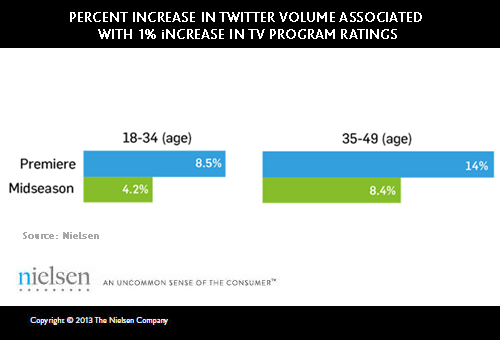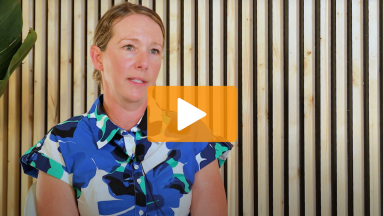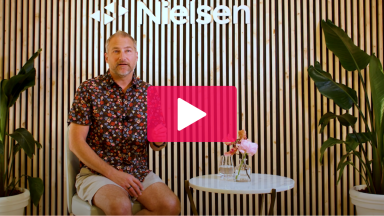U.S. TV viewers are taking to Twitter to talk about TV, and the digital chatter is building steam. According to SocialGuide, 32 million unique people in the U.S. Tweeted about TV in 2012. That’s quite the confab, but what does it all really mean for the TV industry? Should networks and advertisers be paying attention? Early research on the subject from Nielsen and SocialGuide says yes.
By analyzing Tweets about live TV, the study confirmed a relationship between Twitter and TV ratings. It also identified Twitter as one of three statistically significant variables (in addition to prior-year rating and advertising spend) to align with TV ratings.
“While prior-year rating accounts for the lion’s share of the variability in TV ratings, Twitter’s presence as a top three influencer tells us that Tweeting about live TV may affect program engagement,” said Andrew Somosi, CEO of SocialGuide. “We expected to see a correlation between Twitter and TV ratings, but this study quantifies the strength of that relationship.”
Much of the correlation is being driven by the rise in media consumption across multiple device screens. We know that 80% of U.S. tablet and smartphone owners who watch TV use their device while watching at least several times a month. We also know that 40% of U.S. tablet and smartphone users visit a social network while watching TV.
How well does Twitter align with TV program ratings? The recent Nielsen/SocialGuide study confirmed that increases in Twitter volume correlate to increases in TV ratings for varying age groups, revealing a stronger correlation for younger audiences. Specifically, the study found that for 18-34 year olds, an 8.5% increase in Twitter volume corresponds to a 1% increase in TV ratings for premiere episodes, and a 4.2% increase in Twitter volume corresponds with a 1% increase in ratings for midseason episodes. Additionally, a 14.0% increase in Twitter volume is associated with a 1% increase in TV program ratings for 35-49 year olds, reflecting a stronger relationship between Twitter and TV for younger audiences.

Further, the study found that the correlation between Tweets and TV ratings strengthens for midseason episodes for both age groups. An increase in Twitter volume of 4.2% and 8.4% is associated with a 1% increase in ratings for 18-34 year olds and 35-49 year olds, respectively. Moreover, by midseason Twitter was responsible for more of the variance in ratings for 18-34 year olds than advertising spend.
“The TV industry is dynamic and it was important for us to analyze multiple variables to truly understand Twitter’s impact on TV ratings,” said Mike Hess, Executive Vice President of Media Analytics for Nielsen. “While our study doesn’t prove causality, the correlation we uncovered is significant and we will continue our research to deepen the industry’s understanding of this relationship.”


